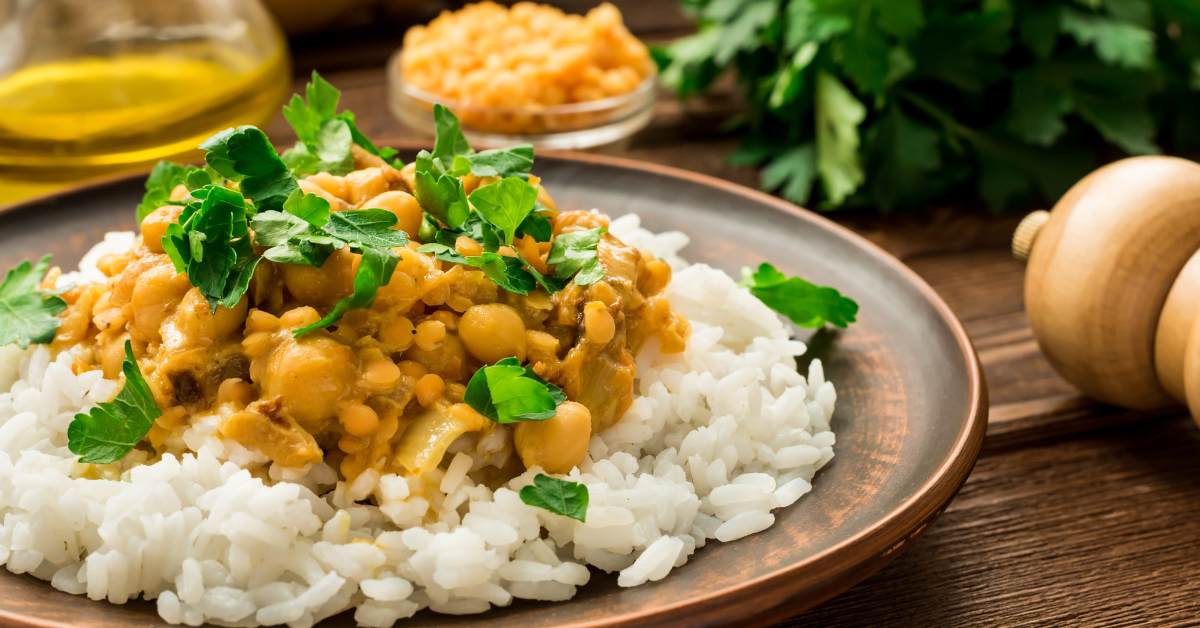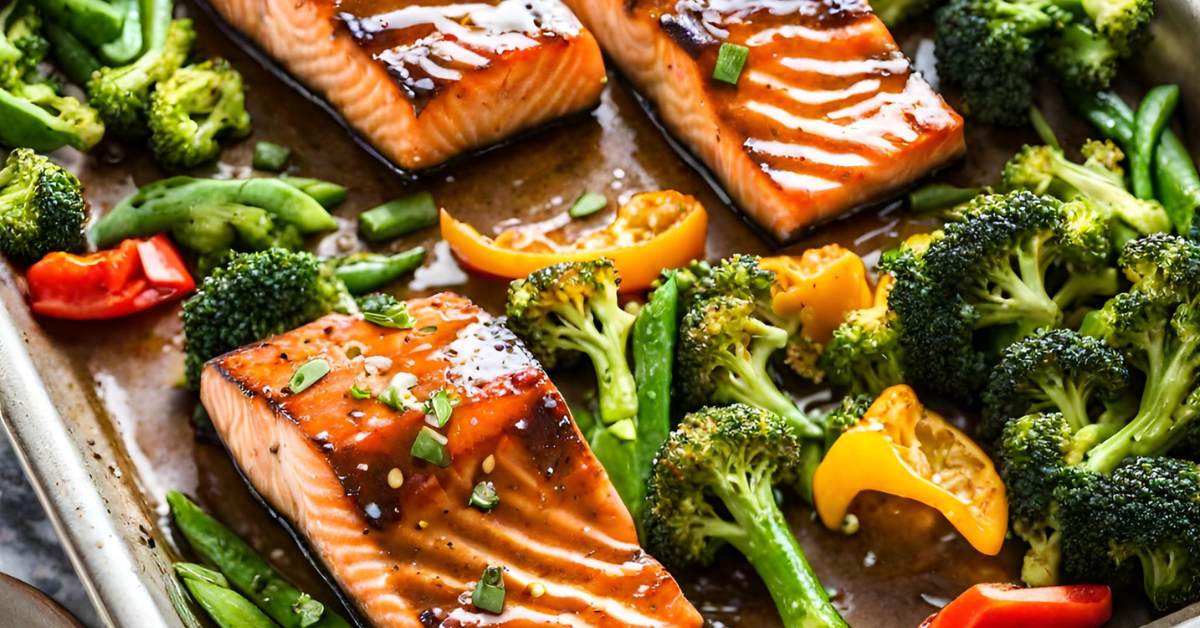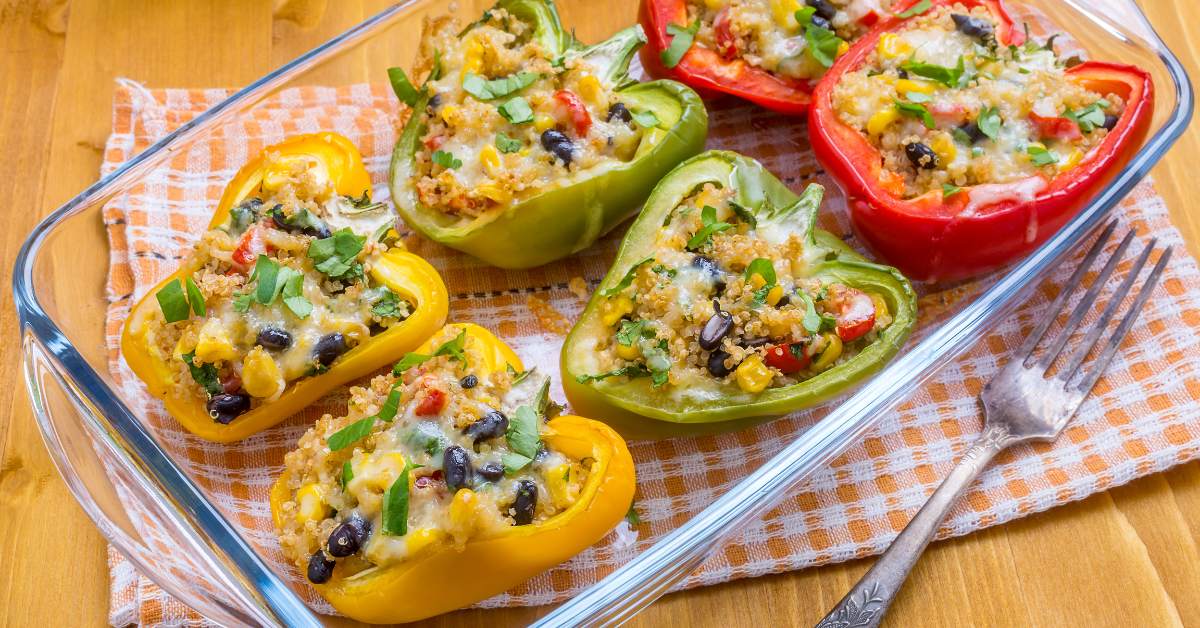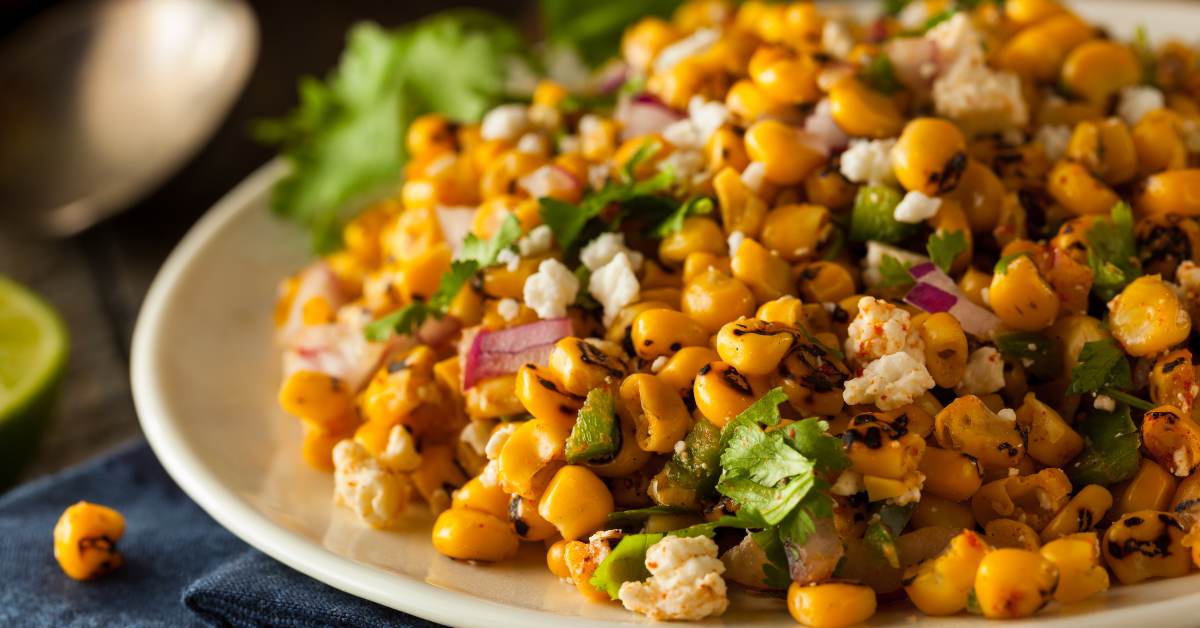Fruits can be preserved in a variety of ways. However, one of the best options to make fruit last for a year or longer is to dry it.
Dried fruit is less prone to molding and can be used for snacking or in recipes.
If you’re not sure of what fruits to dehydrate and how to go about this process, this handy guide will give you all the info you need.
The Fruit Drying Process & My #1 Tip
Although not all fruits dry well, the basic process for drying fruit remains the same.
Heating the fruit allows the moisture to evaporate from it, leaving you with a shelf-stable option that can be stored for months.
One tip that you won’t find in all guides is to pretreat your fruit before you dry it.
Pretreatments are designed to keep the fruit from darkening.
You’ve probably noticed that light fruits such as apples turn brown when they’re cut up.
Treating the fruit before drying it allows the color to remain the same.
It won’t change the taste but you’ll end up with a much better looking final product.
The easiest pretreatment is ascorbic acid or vitamin C.
You can buy the powdered form and mix with water. After allowing the fruit to soak in the solution for 10 minutes, you can then drain it and dehydrate the fruit.
Lemon juice works in the same way
If you don’t want to use this pretreatment consider one of the other options available:
- Steam blanching
- Sulfuring
- Honey dip
- Salt water dip
- Pectin dip
Best Fruits to Dry List
1. Strawberries
If you like fresh strawberries, then chances are you’ll like them dried as well.
Dried berries are sweet and satisfying so they’re a great option to have on hand.
While fresh berries are great, they might not always be available.
Use the dried version as a snack, add on cereals, or use in some of your favorite recipes.
How To: In the oven
Start by washing the strawberries and slicing thinly.
You can dry the whole strawberry, but they dry better when they’re cut into smaller pieces. Use a mandolin if you have one or cut by hand.
Place the berries on a baking tray that’s lined with parchment paper to keep from sticking.
Turn your oven to the lowest setting, keeping in mind that it’s very easy to burn the berries.
Bake at 140 degrees or lower. In the oven, this will take anywhere from 6-10 hours. Remove and let cool before storing or eating.
How To: In a dehydrator
Similar to the oven method, make sure to clean and slice the strawberries before putting them on the dehydrator sheets.
It will take about 6-8 hours to dry completely.
READ NEXT: 6 Ways to Dry Strawberries at Home
And if you\’re feeling extra creative one day, try turning those dried strawberries into a powder. It\’s sooo good.
2. Bananas
Banana chips are crunchy and have a mild flavor that people love. Fresh bananas are a great fruit to enjoy but they go bad quickly.
The good news is that you can easily make your own banana chips from the comfort of your home.
Use bananas that are fresh and completely ripe for the best results.
How To: In the oven
Start by peeling and chopping the bananas. You can dry bananas in wedges but it’s usually a good idea to cut them into rounds for easy drying.
If the bananas are mushy and difficult to slice, put them in the fridge for a few minutes to firm them up.
Pretreat bananas with ascorbic acid or another method to prevent them from browning and the place on a wire rack.
Turn your oven onto the lowest setting and place the bananas inside.
You can also add additional flavor to the bananas by adding sea salt, cinnamon, or other spices.
Flip the bananas after an hour and it will take anywhere from 1-3 hours to dry thin rounds. Cool and store.
How To: In a dehydrator
A dehydrator works in a similar way. Start by placing the banana rounds on the dehydrator racks and turn on.
The dehydrator will take about two hours to dry the bananas completely.
They will be more crisp when they’re done so take them out when they’re almost as crispy as desired.
3. Apples
Apples are one of the most versatile fruits available. They also dry well into either crisps or more chewy dried fruits.
One dried, you can enjoy as a snack or use in a variety of dishes.
How To: In the oven
You can peel apples if desired although this is not necessary.
Slice the apples and then pretreat with citric acid water or your preferred pretreatment.
Place the apples on a cooling rack on top of baking sheets.
Place in an oven set to the lowest setting and crack the door open so moisture can escape.
Oven dry for 2-3 hours, depending on your desired crispness or shorter for more chewy slices.
How To: In a dehydrator
Dehydrators are a great option for apples and allow you to have more control over the drying process.
Place the apple slices on the racks and then dry until they reach their desired doneness.
If your dehydrator has a temperature control, start it at 145 degrees Fahrenheit for an hour and then reduce the temperature to 135 F for the best results.
4. Kiwi
The small, tropical fruit packs a big punch when it comes to flavor.
Kiwi also dries well, making them a good snack to have around.
How To: In the oven
The best way to dry kiwi is to slice them into 1/4 inch slices.
They are juicy so make sure that you place them on a drying rack on top of a baking sheet.
Although most people don’t mind the skin on the kiwi, you can remove it if desired.
Place in the oven set at the lowest temperature for about four hours
How To: In a dehydrator
You’ll also use the same slices and place them on a dehydrator sheet.
Your dehydrator should be set at 135 F if you can adjust the temperature. It will take about 6-12 hours, depending on your unit and desired crispness.
5. Cantaloupe
Cantaloupe has a mild flavor that makes it a great choice for a variety of reasons. However, you may not have seen cantaloupe dried before.
It’s a high moisture fruit so you can expect it to take a longer period of time to dry.
Most people like cutting their cantaloupe thin to get crispy slices but you can do slightly thicker ones if you prefer a more chewy dried fruit
How To: In the oven
Wash the cantaloupe and then halve it, removing the seeds. Slice the cantaloupe into 1/4 inch slices and remove the rind.
The slices can then be put on a baking sheet with parchment paper to avoid sticking.
Put in the oven at 135 degrees for 18-20 hours or as needed.
How To: In a dehydrator
With a dehydrator, you’ll also use your slices and lay the slices on the trays.
You may have to cut them to fit if you have a small dehydrator. You can also expect your dehydrator to be set at 135 F and it will take about 18 hours to dry them completely.
6. Apricots
Apricots are one of the more popular fruits to enjoy dried and with good reason. They dry well and have great natural sweetness and flavor.
How To: In the oven
Wash the apricots well and then cut them in half, discarding the pits.
Line a baking sheet with parchment paper and lay the apricots on the sheet.
Place them in an oven on the lowest setting for 10-12 hours. Flip them about halfway through so they’ll dry evenly.
How To: In a dehydrator
Apricots also dry well in a dehydrator. Use the same preparation steps but place the halves close to each other but not touching on the drying sheets.
Turn on the dehydrator and it will take approximately the same time.
No need to flip them as the dehydrator should provide even heat.
7. Grapes (Raisins)
We’ve all had raisins which are just dried grapes. But, you may enjoy making your own as well.
Make sure that you use seedless grapes only as the seeds can be annoying to remove.
How To: In the oven
Wash the grapes well and then separate from the stems. You can half the grapes to speed up the drying process but this isn’t necessary.
Place them on a baking sheet and put in the oven for 140 F.
It’s best to leave the oven door cracked for better air circulation. It takes about four hours for them to dry.
How To: In a dehydrator
Use the same preparation process but if your dehydrator has a temperature setting, raise it to 145 initially to get the process started.
After a few hours, reset to 135 to avoid burning the grapes.
You’ll want to shuffle the trays every few hours to prevent sticking.
8. Oranges
Dried oranges can be used for garnishes, snacks, and even decorations!
The brightly colored circles make them a fun fruit to both dry and enjoy.
How To: In the oven
Wash the oranges and slice them to 1/4 inch thickness. If desired, you can remove the peel but most people don’t.
Place them on a rack on top of a tray at the lowest temperature possible.
Leave them for two hours, turning each hour. Once cooled, store and enjoy them.
How To: In a dehydrator
Since it’s easy to burn oranges while drying, dehydrators are going to produce better results.
Slice the oranges and then arrange on drying pans.
Turn the dehydrator on low and check every few hours until done. They also tend to stick to the sheets so use a spatula for easier removal.
9. Cherries
Cherries are rich in nutrients and may even be better when dried. They make a great addition to baked goods, as a topping for cereal, and many other uses.
Make sure to use only ripe cherries for the best results.
Click here to read the complete tutorial for drying cherries.
How To: In the oven
Wash the cherries and allow them to drain. Remove the stems and the pits. You may have to cut them in half or use a cherry pitter if you have one.
If cut, place them cut side up on baking sheets with room in between the cherries. Bake them at 150 F.
They will be dried in about 10 hours.
How To: In a dehydrator
Wash and pit the cherries and then place on the drying sheets. They can dry at a higher heat setting for a few hours.
Turn the heat down to low to avoid burning the fruit.
Remove from the dehydrator and let dry completely before storing.
10. Cranberries
Fresh cranberries are a favorite around the holidays but dried cranberries are a treat year-round.
They’re easiest to make in a dehydrator but you can use your oven as well.
Actually, you can even use an air fryer. I have a complete tutorial for drying cranberries where you can learn all the different methods, step-by-step.
How To: In the oven
Before drying the berries, you’ll have to blanch and sweeten them.
You can omit sweetening them but they won’t taste as good.
Pour boiling water over the cranberries and allow them to soak for 10 minutes. Drain the water and then make a simple sugar syrup.
Mix the cranberries in with the syrup and then put them on a cooling rack with parchment paper on top of a baking sheet.
Dry them in an oven set to 135 F. They should be done in about 8 hours.
How To: In a dehydrator
You’ll also want to use the same preparation methods before putting the cranberries in the dehydrator.
Give the berries enough space for air to circulate and drain any excess syrup.
You can dry them on the lowest setting for the best results.
11. Pineapple
Not all fruits dry well but pineapple is one that turns out consistently great. Make sure to use only perfectly ripe pineapple for the best results.
How To: In the oven
Slice off the outside rind and cut the pineapple into thin slices. remove the middle core as well.
Make your slices as thin as possible for easy drying and then place on a drying rack on top of a cookie sheet.
Bake in an oven for the lowest setting. It should be about eight hours until they’re done. Flip them periodically.
How To: In a dehydrator
Prepare the pineapple by slicing it thin and putting it on the drying racks. Make sure that you don’t allow the pineapple to touch.
Dry at medium heat and use a spatula to pull up the pineapple as the juice will make it difficult to remove.
Remove when done and then cool and store.
12. Blueberries
Blueberries are a rich source of antioxidants and the dried ones are full of flavor as well.
You can keep your blueberries easy to eat whenever you want by having dried ones handy.
How To: In the oven
Rinse the blueberries and remove any leaves or stems.
Spread them on a cookie sheet lined with parchment paper and put in the oven at 225 F.
They should dry in about 3 hours
How To: In a dehydrator
After washing the berries, spread them in a single layer on the drying sheets.
Turn on the higher setting and rotate or agitate the sheets occasionally to prevent sticking.
READ NEXT: How to Dry Blueberries 4 (EASY!) Ways
13. Peaches
Peaches are a favorite fruit and this juicy treat makes a great dried fruit snack. You can also include dried peaches in muffin recipes, cookies, breads, and more.
They can be more challenging to dry since they are juicy when ripe but it’s well worth the effort.
How To: In the oven
Wash your peaches and then thinly slice them, removing the core. Dip the slices in ascorbic acid or lemon water to prevent browning.
Then place the slices in a strainer and allow the excess juice to drain for 5 minutes.
Put a wire rack on top of a pan and place the slices on the rack.
Dry for 8-12 hours at 135 F in the oven or until done.
How To: In a dehydrator
With this method,you’ll use a similar process. Place your sliced and drained peaches on the racks and place in the dehydrator at 135 F if you can use this setting.
Dry for 10-12 hours for the best results.
14. Pears
Pears are a high-fiber fruit that you don’t see dried very often. Their mild flavor makes them a great choice for snacking or pairing with cheese and your favorite wine.
One of the best ways to dry pears is by doing it yourself.
How To: In the oven
If you have an apple corer handy, this is the best way to core the pears.
Cut them into thin round slices with a sharp knife and then arrange them on a rack.
The slices should not overlap for the best results. Put them into the oven set at the lowest temperature for 4 hours.
Flip them halfway through for the best results.
How To: In a dehydrator
This method also involves coring and slicing the pears. Make sure to arrange them on the drying racks in single layers.
They can dry at 135 and will take about 4-6 hours to dry completely. Remove and let them cool before storing.
15. Figs
Figs are a rich source of fiber, iron, and potassium. Although you’ve probably had dried and fresh figs, their shelf life is fairly short.
They’re not a high water-containing fruit so they’re also easy to dry.
Dried figs make great additions to salads, charcuterie boards, and more so you may want to dry your own and keep them handy.
How To: In the oven
To dry figs in the oven, preheat the oven to 140 F. This is probably the lowest setting for your oven.
Rinse the figs thoroughly and then cut them in half.
Lay them on an oven-safe rack with the cut side facing upwards. Then place the figs in the oven.
It’s a good idea to leave the door open slightly to allow moisture to escape.
Turn the figs every few hours to allow for even drying.
How To: In a dehydrator
Drying figs in a dehydrator follows a similar process. You’ll start with the figs cut in halves and then place them skin-side down on the dehydrator tray.
Put them in the dehydrator and allow them to dry for 6-8 hours.
Check them periodically and remove when the figs are done.
Allow to cool completely before storing.
Dehydrating Fruit Times
The amount of time to dry fruit depends on its water content and the method used.
However, some fruits dry in a few hours while others can take much longer.
These are a few of the drying times for commonly dehydrated fruits:
- Apples- 7-15 hours
- Bananas- 6-10 hours
- Berries- 10-15 hours
- Cherries- 13-21 hours
- Grapes- 22-30 hours
- Peaches- 8-16 hours
- Pears- 8-16 hours
- Strawberries- 7-15 hours
- Pineapple- 10-18 hours
If the fruit you’re drying isn’t on this list, look at a fruit that is fairly similar. This will give you an idea of how long it will take to dehydrate.
How to Dry Fruit Naturally
Air drying fruit is a natural drying method that can take a longer period of time.
However many people enjoy this option, so if you live in an area with good sunlight, give it a try!
In order to dry fruit naturally, you’ll need a screen for the fruit to act as a drying rack.
Cut up the fruit and then place the fruit on a drying rack.
Make sure to leave space between the fruit so there’s plenty of room for air to circulate.
It’s also a good idea to cover the fruit with cheesecloth to keep out bugs and dirt.
Put the screens in the sun and turn them about every two hours. If your fruit is not dried by nighttime, bring it indoors to avoid getting the fruit damp with the dew.
It can take anywhere from 2-6 days for fruit to air dry.
>>> READ NEXT: How to Dry Mangoes in the Sun
How Do You Know When Dehydrated Fruit Is Done?
A good rule of thumb to follow is whether or not it passes the pliability test.
Fruits should be slightly pliable, but you don’t want them to break. If you try to bend a piece of dried fruit and it snaps into two pieces, that means it was overly dehydrated.
You can also test doneness by cutting a piece in half and check for moisture.
If dehydrated properly, you shouldn’t be able to see any signs of moisture.
And you definitely shouldn’t be able to squeeze any water droplets out of it.
Recognizing “perfect pliability” and doneness will come with time and experience.
Like anything in life, knowing when dehydrated fruit is done takes practice.
How Long Does Dehydrated Fruit Last?
Most dried fruit will last approximately one year. You should make sure to store your dried fruit in a cool, dry place.
Rotate your fruit so that you use the oldest dried fruit first.
If you notice any mold or other problems with the dried fruit, discard it immediately.
If kept properly, dried fruit can last up to a year although you should monitor it.
Which Dry Fruit Is the Healthiest?
This is a common question that people ask. Fruit, in general, is a rich source of nutrients and fiber.
There’s no one type of dried fruit that is the healthiest although fruits dried without adding any sugar are best.
Some of the healthier dried fruit options include fruits with moderate fiber content such as apples, berries, and oranges.
All fruits can and should be enjoyed in moderation though.
Dried fruits contain natural sugar that is more concentrated during the drying process.
This means that it may be easier to eat a higher quantity of dried fruit than you would with fresh fruits.
This doesn’t mean you should avoid dried fruit but you may want to limit your dried fruit intake.
Well, that’s about it!
This list represents the best fruits to dehydrate because they’re easy but also incredibly delicious!
Let me know how yours turned out or if you have any questions.










Thankyou for sharing this great tips and idea. 🏆🏅🙏
Merci beaucoup pour les conseils. . Je fais sécher des fruits tropicaux surtout avec un Deshydrateur . J’ai un Atelier de transformations.
I have been dehydrating for a little over 2 months and I love it with fruit. Meat I have a problem with so I am going to stick to fruits and vegetables. My dehydrater is my new toy just like my air fryer is. I love experimenting with things. Any suggestions for new treats?
Zucchini soaked in pineapple juice. It sounds strange, but it is soo good! https://www.youtube.com/watch?v=92oaeHgfRaU
I love dried Mango. Would this work with that fruit as well?
Absolutely! 🙂